Why is Prototyping Important to UX Designers?
Prototyping is a crucial step in the design process prior to any software going into the development stage. The reason is that prototyping is relatively inexpensive, so it lends itself naturally to iterations, changes, improvements, and other modifications. UX designers consider it to be a pivotal point in the design journey for practical considerations such as usability, efficiency, and value, all of which contribute to the end user’s experience, which is what UX is all about.
UXPin…But…
UXPin is an excellent tool for prototyping because it offers in-depth capabilities like component states and conditional logic. However, there are also a lot of drawbacks, such as a relatively steep learning curve and the fact that the more advanced features are only available in the more expensive Advanced and Professional plans.
UXPin Alternative Tools
There are numerous UXPin alternative tools you can consider for your design team, the five best of which are listed below, along with their features and what they cost on a monthly or yearly basis. Each one comes with a powerful suite of features specifically targeted at UX designers and other design professionals. There are several others that could have made this list, but we found these to have the most relevant features in terms of being ideal UXPin alternatives.
Contents
The 5 Best UXPin Alternative Tools
Take a glance below at the best UXPin alternative tools for advanced prototyping.
Wondershare Mockitt is one of the best tools for prototyping and a tremendous UXPin alternative. It is hosted on the cloud, giving you the ability to access the platform on any connected device with a modern browser. It comes with a full set of features for designing from scratch, using standard UI components, or with ready-to-use templates. You can also rapidly prototype your designs with the drag-and-drop simplicity it offers. As a cloud tool, it is highly collaborative in nature, allowing team members to co-edit, comment in real-time, and share designs with other stakeholders in a secure manner.
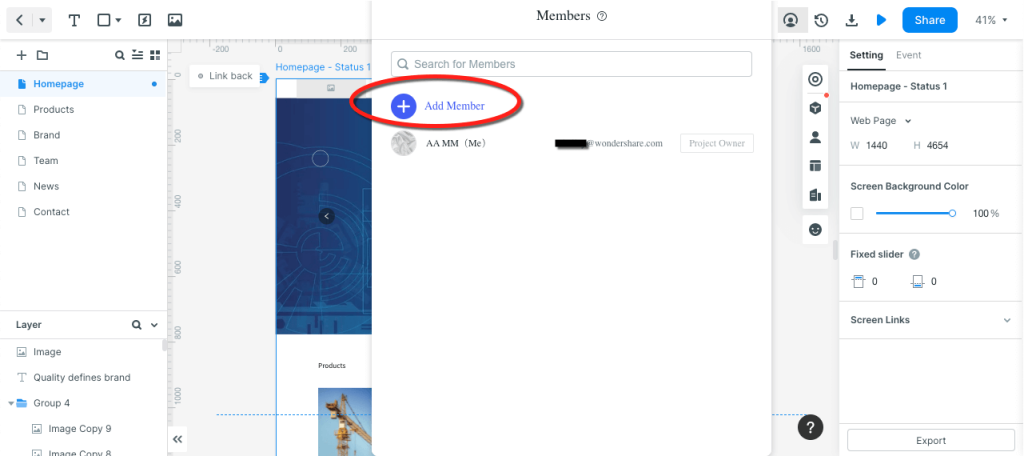
Mockitt is under continual development, and new features are added at a rapid pace. A case in point is the useful flowchart module that gives you templates and all the user flow components you need to create complex flow diagrams.
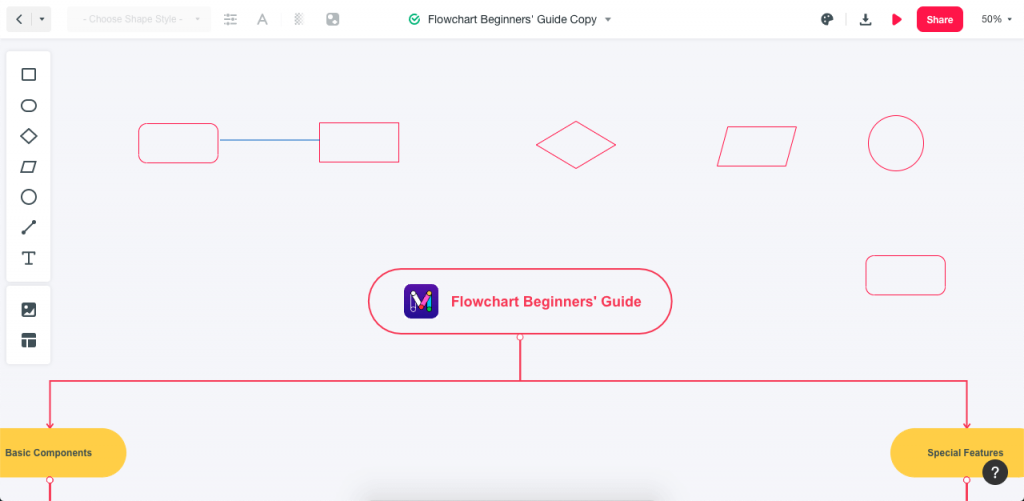
Also being introduced shortly is the design tool, which supports Boolean and Bezier operations and lets you draw out your designs with a great degree of control and flexibility. These are just a few examples of why Mockitt makes a compelling case for UX designers, project managers, and developers alike. Here are some more:
- Intuitive UI – Easy to use with a gentle learning curve
- Clean layout – Easy to navigate and find various features
- Extensive asset libraries – Widgets, templates, UI kits, and much more to help you get started faster
- Collaboration tools – Designed for teamwork, Mockitt allows co-editing, instant comments, and fast feedback mechanisms
- Affordable plans – Including a free-forever plan to test out basic and advanced features
- Secure sharing – The sharing feature allows you to send your designs to other people with dynamic links with specific permissions and other attributes.
Price
Free Forever Plan – 3 projects | 10 screens each | 100MB asset storage
Personal/Professional Plan – $69 a year per user
Enterprise Plan – $99 a year per user, includes co-editing, live commenting, version history, and member management
Adobe XD
Adobe XD is undoubtedly one of the most premium design tools available today, but it does have certain disadvantages, not the least of which is the pricing. Moreover, since it is a desktop application, documents have to be uploaded to Document Cloud before collaboration can begin. Additionally, you can only share a design if all the screens have been linked to each other to create a user flow or prototype.
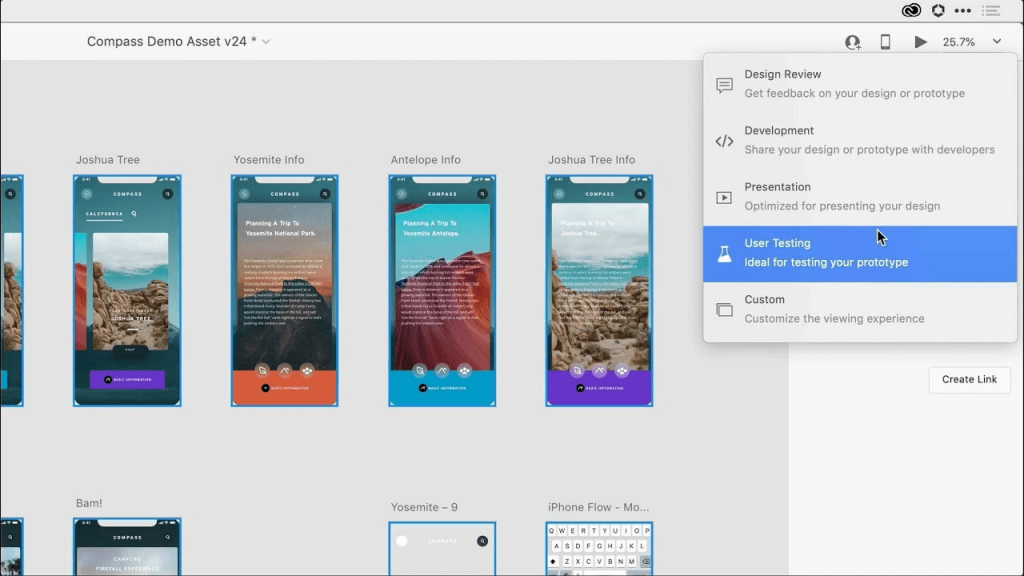
The advantage of Adobe XD is its integration with other Adobe design products like Photoshop and Illustrator. It also offers a mature UI with a ton of features. The layout is fairly clean, and there are distinct tabs for Design, Prototype, and Share functions.
Key Features of Adobe XD
- Deep integration with products like Illustrator and Photoshop
- Requires DC uploads for collaboration
- Easy linked-based prototyping
- Component states to show dynamic interactions within a screen
- A vast repository of components that are customizable
- A high degree of collaboration for cloud-stored designs and prototypes
- 3D design feature for realistic prototypes
Price
Free trial available with limited functionality
Individual Plan costs $9.99 per month per user
Team Plan costs $22.99 per month per user
Mockplus
Mockplus is available for desktop (Classic versions for Mac and Windows), mobile (for prototype testing only), and cloud (Mockplus Cloud and Mockplus RP). It offers a range of plugins for importing designs from other platforms like Sketch, Figma, Axure, and Adobe XD and Photoshop. You can export project screens from any of these platforms, prototype them, and then share them with developers and other stakeholders.
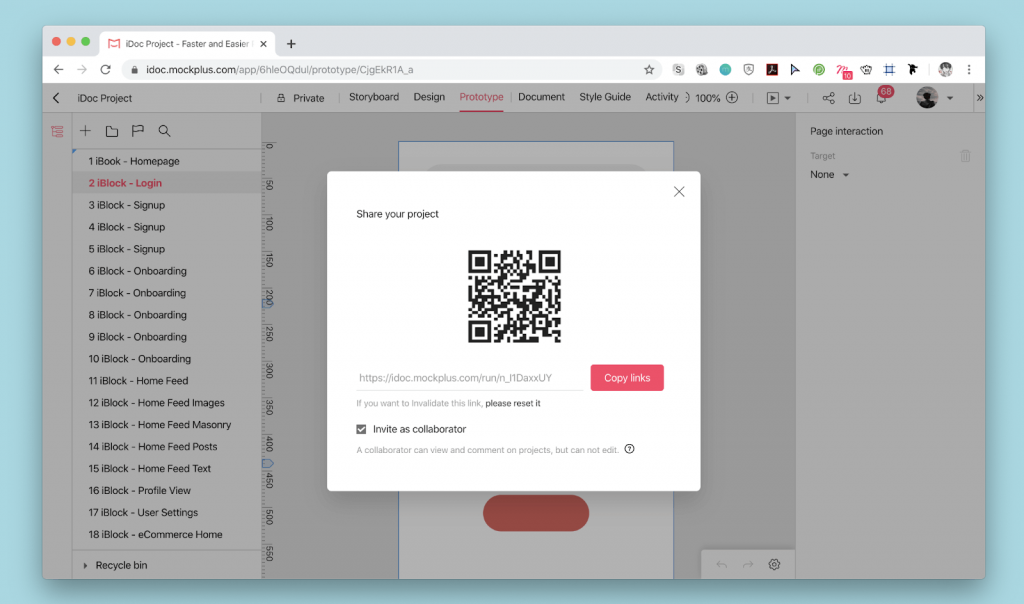
Mockplus offers extensive sharing and collaboration options. Mockplus RP, for example, allows multiple people to work on the same project online in a device-agnostic manner. Extensive page interactions allow you to create highly engaging prototypes. If there’s one reason to use Mockplus, it’s the fact that it caters to several platform needs including desktop, cloud, and mobile, making it a very versatile tool to have.
Key Features of Mockplus
- Includes project samples and templates
- Multiple previewing and sharing options
- Import from Sketch and other design platforms
- Cloud project management dashboard
- MindMap Design mode
- Add spreadsheets with the Table component
- Team and project activity tracking
- Image import feature – individual and bulk options
Price
Free Plan for up to 10 projects
Pro Plan – $71.40 per year per user
Ultimate Plan – $155.40 per year per user
Protopie
Any UX designer must consider Protopie as a serious prototyping tool. It offers several unique features such as interaction recipes, voice prototyping, camera inputs, etc., and integrations for all the top design platforms so you can import and prototype with just a few clicks. Protopie regularly showcases the best work of its own designers and clients willing to act as references for the product.
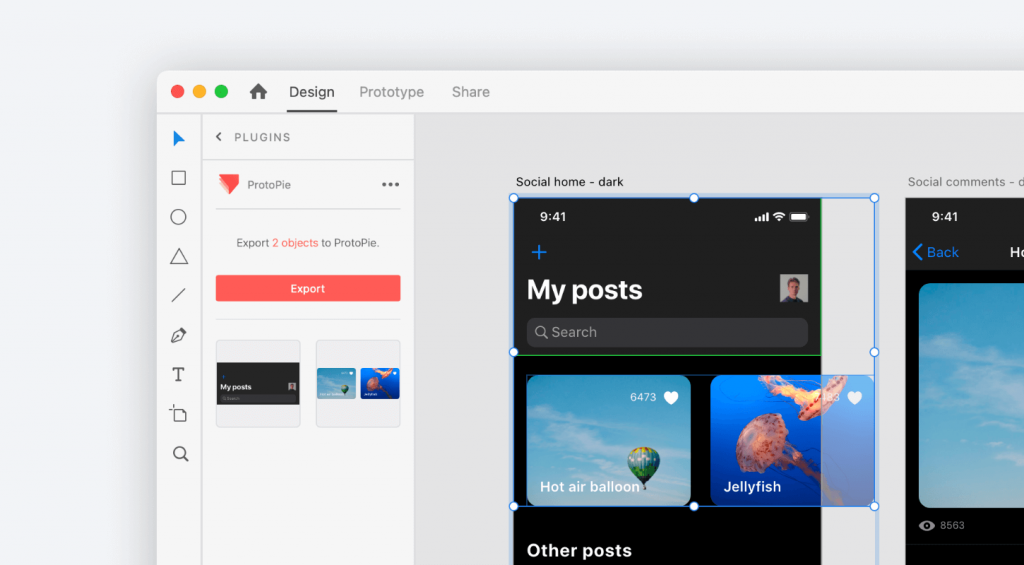
Protopie is a powerful UXPin alternative because of its extensive features. These include using variables, embedding native keyboards, creating formula-based interactions, and so on. The price point is also not too heavy, making the tool ideal for small as well as large design teams. You can think of Protopie as a very polished and elegant prototyping tool that packs a powerful punch when it comes to delivering stunningly realistic prototypes. The only downside is that it takes a while to get used to because of the unique features not found elsewhere.
Key Features of Protopie
- Extensive prototyping tools – interaction libraries, camera inputs, native keyboard support, voice-triggered prototyping, dynamic interactions, variables, etc.
- Industry-specific solutions to integrate hardware into the prototyping process
- Online workshops to facilitate learning among designers
Price
Individual Plan at $129 per year
Team Plan at $499 per year per user
Higher Plan available for enterprise users that includes set-up, training, and a dedicated account manager
Moqups
Moqups is nowhere near as advanced as Mockitt or Protopie but allows you to easily and quickly create prototypes using standard gestures and animations. It offers specific tools for different types of process flows, such as UML diagrams, flow charts, MindMaps, and so on. Arguably the best feature is the ease of collaboration, with real-time commenting and quick feedback loops to facilitate faster workflows.
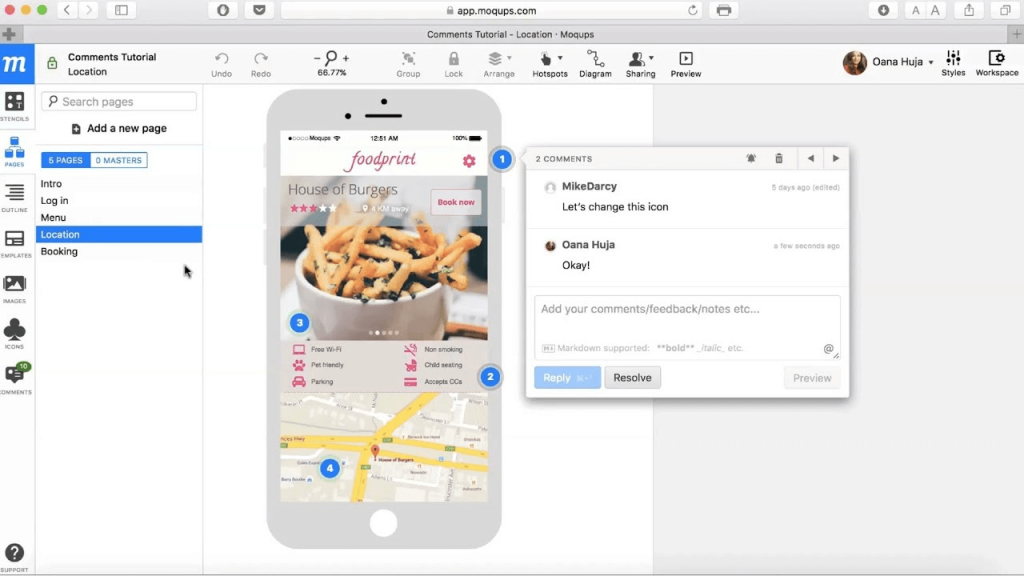
Another great feature of Moqups is the intuitiveness of the interface. Navigation is quite simple, and you can find any feature in just a couple of clicks. It also comes with a ready set of design components to create mockups and wireframes quickly before prototyping them.
Key Features of Moqups
- Markup and commenting tools
- Integration with project management platforms like Jira
- Readily available design component libraries
- Real-time commenting and fast feedback loops
- Fast prototyping with standard sets of gestures, transitions, and animations
- Easy sharing and asset export
- Clean UI with a clear feature layout
Price
1 project with 5MB storage – Free Plan
Annual Plan: 3 Users @ $192 per year | Unlimited Users for $588 per year
Monthly Plan: 3 Users @ $23 per month | Unlimited Users for $69 per month
Conclusion
As you can see, these powerful UX Pin alternative tools each bring their unique flavor to the design table, in a manner of speaking. They’re all great for basic prototyping, but if you have complex designs to prototype, you need something advanced such as Mockitt or Protopie. The level of interaction these platforms can provide far outdoes that of the other platforms.
Mockitt, for instance, offers dynamic widgets with in-page state changes, Master Widget status for global editing and reuse of components, flowchart modules, and, as mentioned, a design tool for vector drawings to test your true design skills. The most attractive feature by far is the pricing. Mockitt comes in at the perfect price point for both individuals as well as large teams. It is also built with collaboration in mind, allowing easy co-editing, instant comments, and other real-time features. If you’re looking for something that is robust, flexible, and versatile but still won’t break the bank, Wondershare Mockitt is the obvious choice.
Share your feedback in the comments section below. Follow Techowns.com for more tech information. Visit the Techowns’ Facebook and Twitter pages to access other tech updates and articles.



